
Clasping Test
The limb clasping test is a behavioral procedure used to evaluate motor deficits, and is a marker of disease progression in several neurodegenerative disease rodent models. For this test, the animal is gently lifted by its tail, and its hindlimb posture is observed.
Typically, healthy animals tend to extend their hindlimbs away from their abdomen when suspended. However, animals with corticospinal or motor deficits may show an abnormal response by retracting or "clasping" their hindlimbs towards their body. The degree of limb retraction is scored and serves as an indicator of motor impairment or neurological dysfunction.
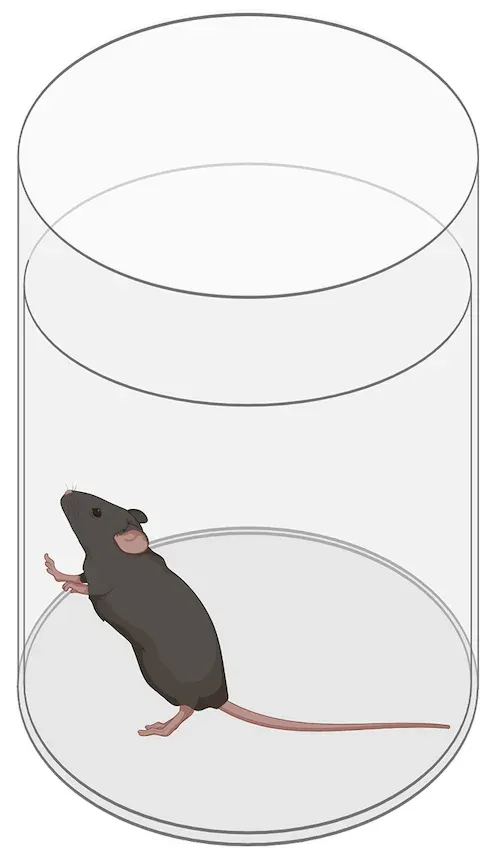
Cylinder Test
The cylinder test is a method used to assess spontaneous motor behavior in rodents. During this test, the percentage of each forelimb use is analyzed while the animal engages in vertical exploratory behaviors or makes contact with the cylinder walls.
This behavioral test serves as a measure of forelimb preference or asymmetry, and can provide insights into motor deficits, recovery, or asymmetrical impairments following neurological damage or interventions in rodent models.
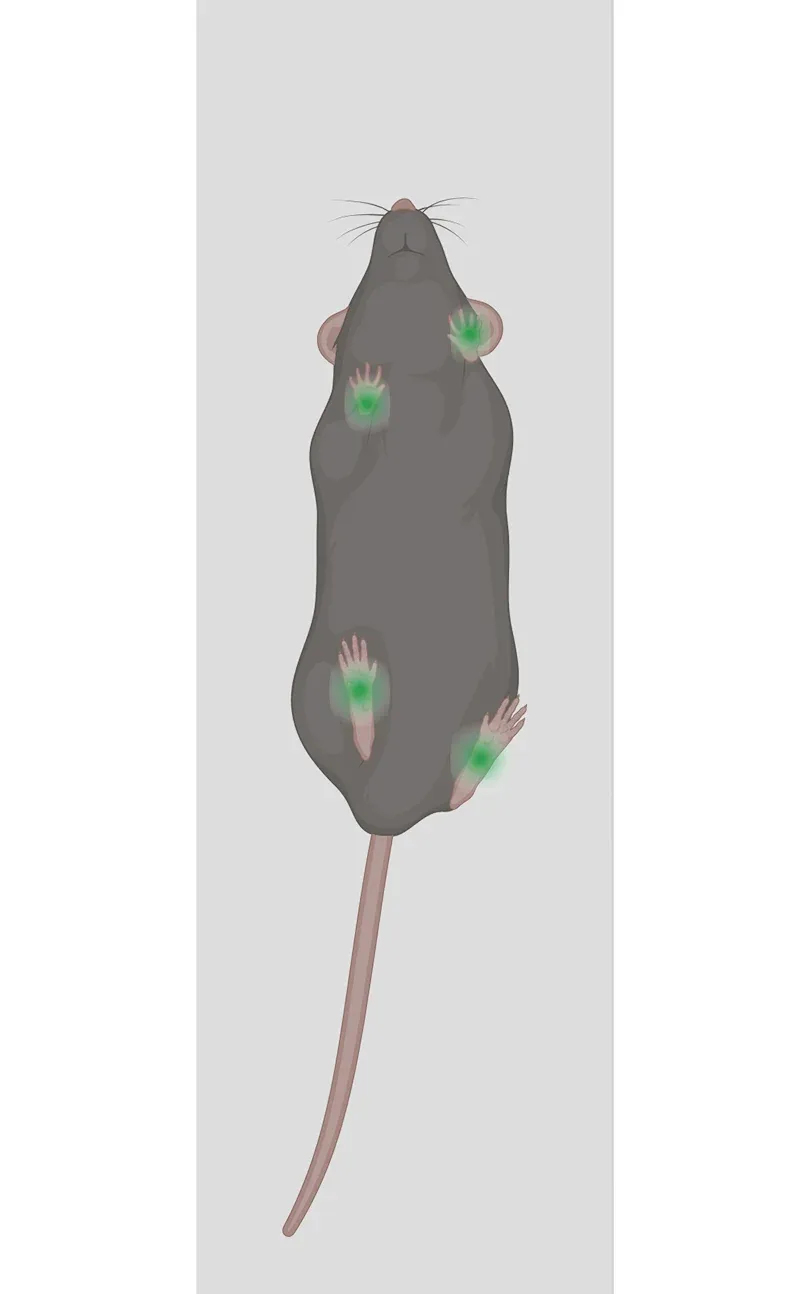
Gait Analysis
We use the Noldus CatWalk XT system for quantitative gait analysis. CatWalk XT provides a comprehensive and automated method used in rodent studies to evaluate locomotion and gait parameters. It involves animals walking across a transparent glass plate under illumination while a high-speed camera records their paw prints.
This system captures and assesses a large number gait parameters, such as paw print area and stride length. This data can then be used to detect changes in gait pattern, coordination, symmetry, and alterations in locomotor behavior resulting from neurological conditions, injuries, or experimental manipulations.
The CatWalk XT system furnishes detailed quantitative data, enabling a thorough assessment of locomotion and gait irregularities in rodent models, aiding in understanding motor impairments associated with different diseases or experimental conditions.

Grill Agility Test
The grill agility test, also known as the grid-walking test, is a behavioral task designed to help assess motor function in rodent models. This procedure aims to provide insight into the animal’s balance, agility, and fine motor skills.
It consists of a grid (or “grill”) upon which the animal is placed and left to explore. The animal's ability to navigate and walk across the grill is scored.
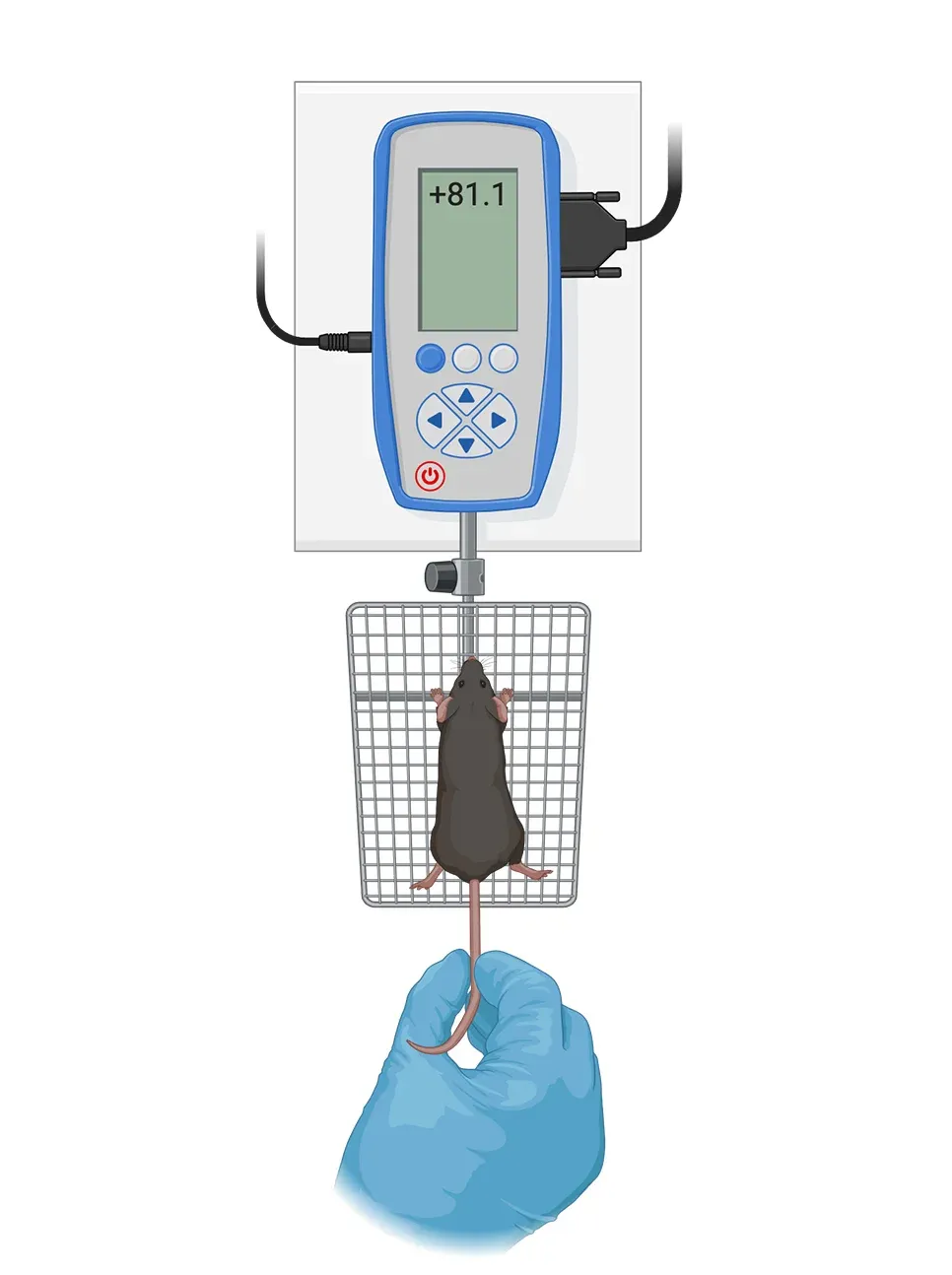
Grip Strength Test
The grip strength test in rodents is a common method used to evaluate the limb muscle strength and overall neuromuscular function. In this test, the animal grasps a specialized apparatus (a grid or a bar attached to a force-sensing device) with its paws, and is gently pulled away from the instrument until it releases its grip.
The maximum force exerted by the animal before losing its grip is recorded as a measure of grip strength.

Mechanical Sensitivity Test
The mechanical sensitivity test follows a standard protocol to assess nociception in rodent models. During the procedure, mechanical stimuli are applied to specific body regions (typically the paws) to measure the animal's sensitivity.
The test records the threshold at which the animal reacts to the stimulus, typically manifested as a withdrawal response or vocalization.
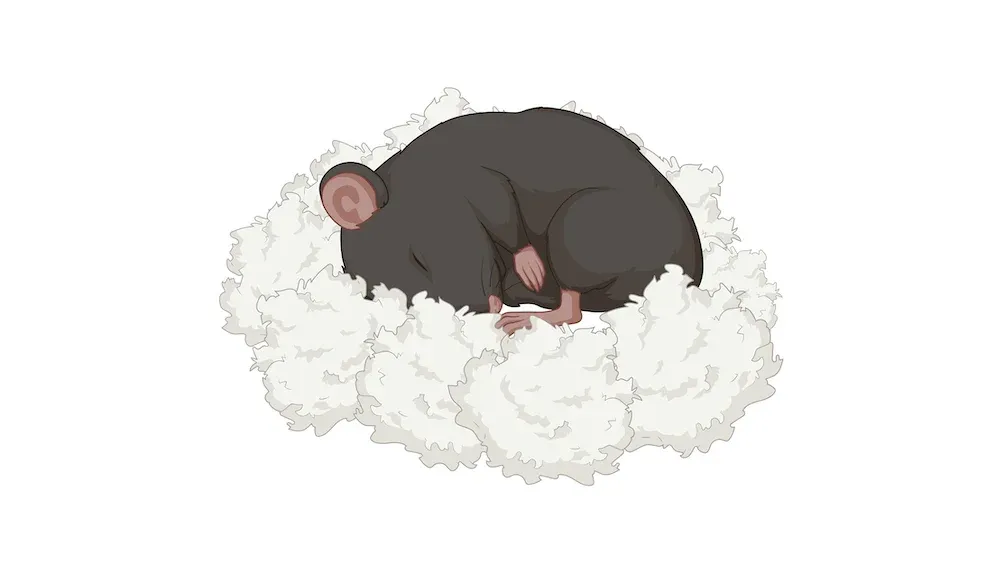
Nest Building Test
The nest building test is a widely used behavioral assay for study in rodents. It relies on the animal’s natural behavior of nest building and can provide valuable information regarding their cognitive function and fine motor skills.
Changes in nesting behavior, such as reduced nest building, altered nest structure, or decreased complexity, serve as potential indicators of neurological impairments.

Open Field Test
The open field test is a widely used behavioral assay aimed at assessing ambulatory activity. It involves placing the animal in a novel open arena and recording its spontaneous exploratory behaviors, such as locomotion, rearing, and time spent in the center versus periphery of the field. Mice with anxiety-like symptoms typically exhibit reduced exploratory activity, spending more time in the periphery and displaying decreased locomotion and rearing behaviors, indicating heightened anxiety or fearfulness.
Conversely, depression-like symptoms might manifest as decreased overall activity levels, reduced interest in exploration, and diminished motivation to engage in typical behaviors, reflecting a potential depressive state.
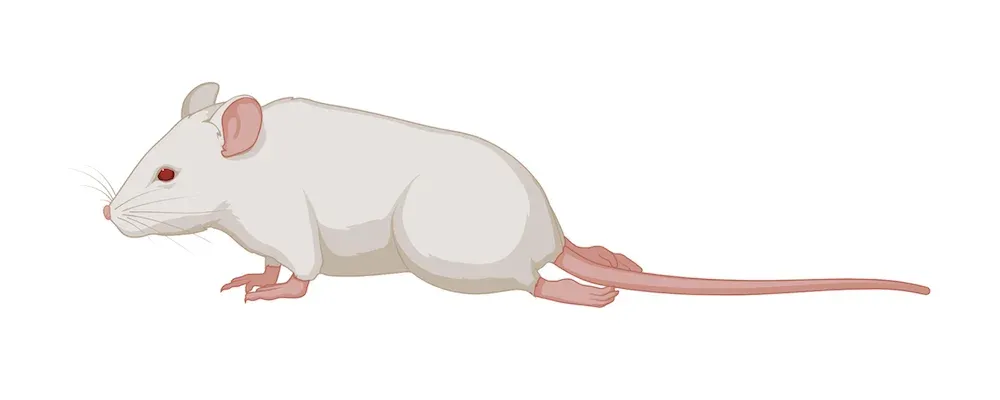
Paralysis Assessment
Limb paralysis is a common feature of several models of neurological conditions utilizes standardized measures of neurological motor scoring. Evaluation of limb paralysis typically involves the use of a standardized, numerical scoring system to quantify the severity and progression of paralysis-related symptoms.
This scoring may encompass observations of limb movement, postural changes, coordination during movement tasks, reflex responsiveness, and overall mobility.

Rotarod Test
The rotarod test is a commonly used method in behavioral neuroscience to assess motor learning, coordination, balance, and endurance in rodent models. This test involves placing the animal on a rod that rotates at either accelerating or fixed speed, requiring the animal to walk or run to maintain balance.
The time the animal remains on the rotating rod before falling off or displaying a loss of coordination is recorded. Changes in performance on the rotarod can indicate alterations in motor coordination, balance, or motor learning.
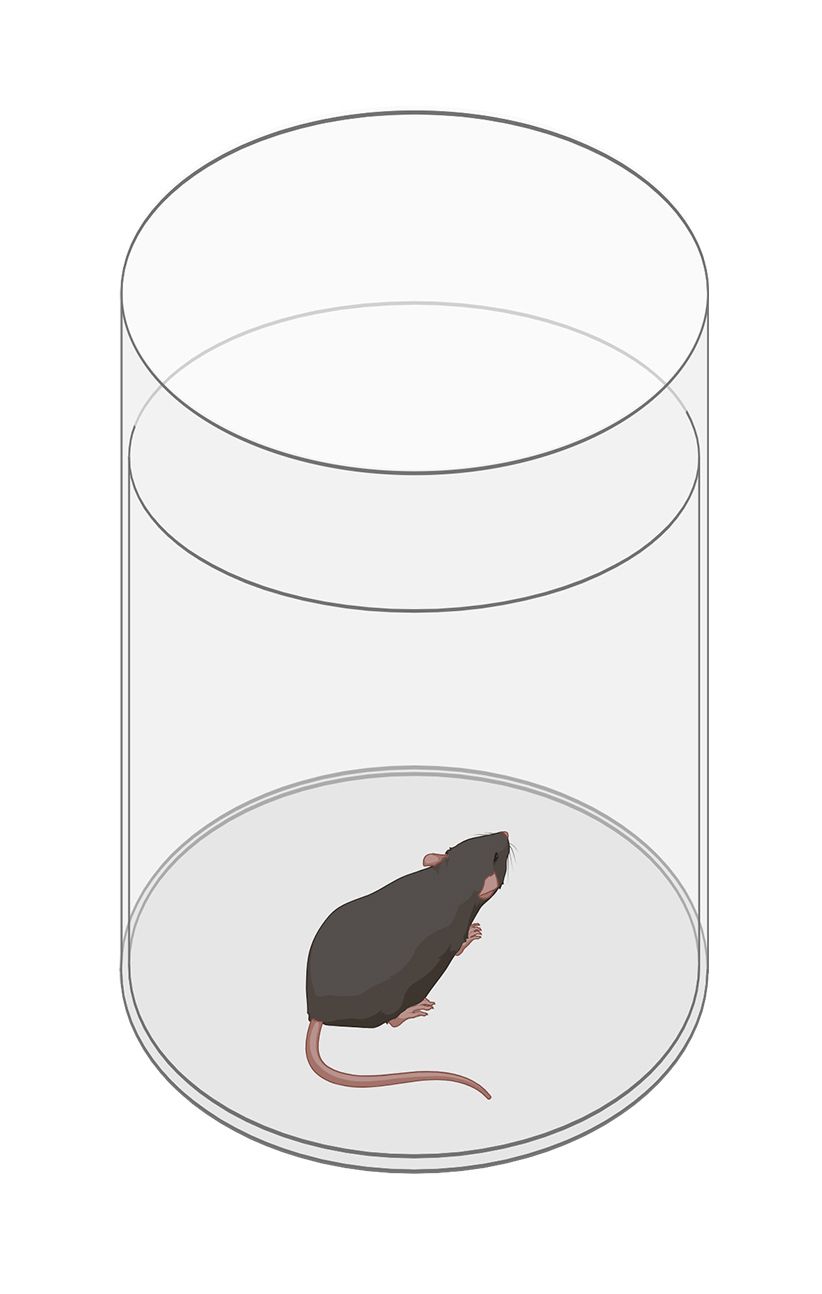
Rotation Test
To evaluate certain alterations in movement patterns, activity levels, and behavioral changes caused by different interventions on animal models, a rotameter can be used. Throughout the test, the rotameter captures data on several parameters, such as distance covered, velocity, rest intervals, and various locomotor behaviors, including clockwise and counterclockwise rotations.
Since spontaneous rotations are usually observed in rodents with significant inter-hemispheric dopaminergic imbalance, drug-induced (e.g. apomorphine) rotational measurements are typically used for functional recovery or neuroprotection studies, since they amplify spontaneous bias and induce a sustained, reliable, sensitive, and reproductible measure of the extent of neurodegeneration.
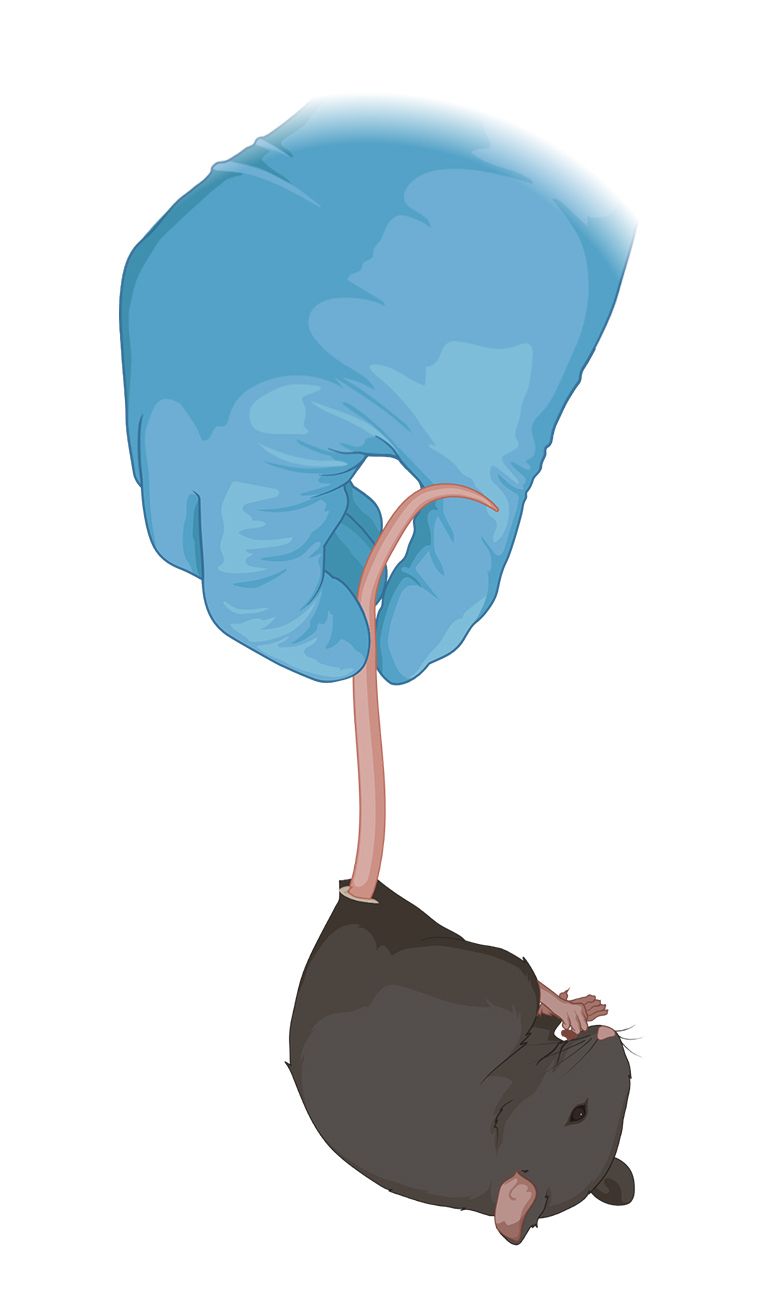
Tail Suspension Swing Test
The tail suspension swing test is an easy test used to assess motor asymmetry in rodents. In this test, the animal is suspended by its tail approximately 5 cm above the ground, and the number and direction of head swings out to the vertical axis are counted.
This behavioral test is used to detect early motor impairments, evaluate the extent of neurodegeneration, and characterize the neuroprotective effects of treatments.
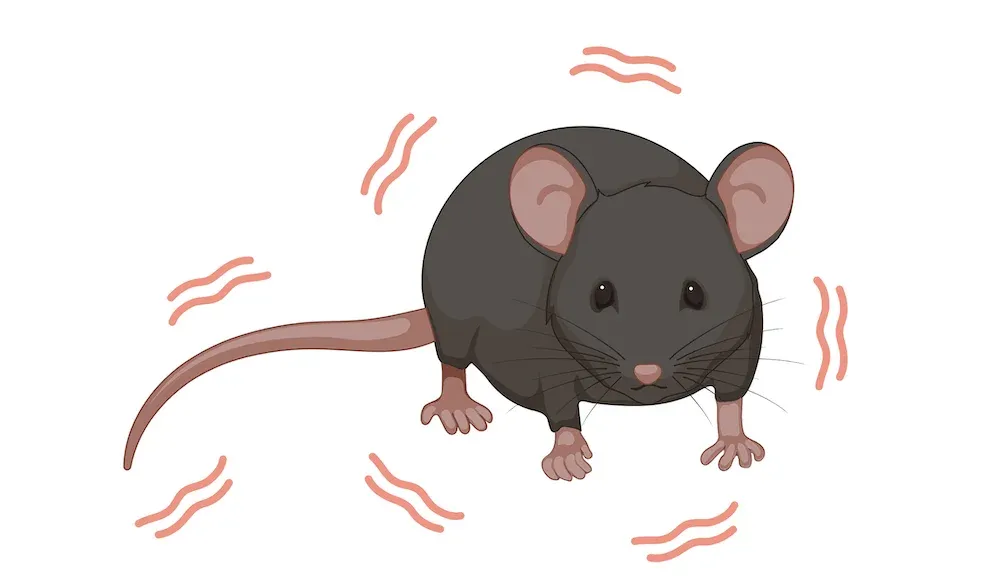
Tremor Assessment
Tremors are involuntary and rhythmic movements that can occur in different regions of the body. Tremors are observed in several rodent model of neurological diseases, such as ALS and Parkinson's disease. By monitoring tremors, we can gain a better understanding of disease progression in the model or response to therapeutic intervention.
We typically use a semi-quantitative scoring system, ranging from 0 (no sign of tremor) to 3 (severe, disruptive shaking) to evaluate tremor in rodent models.
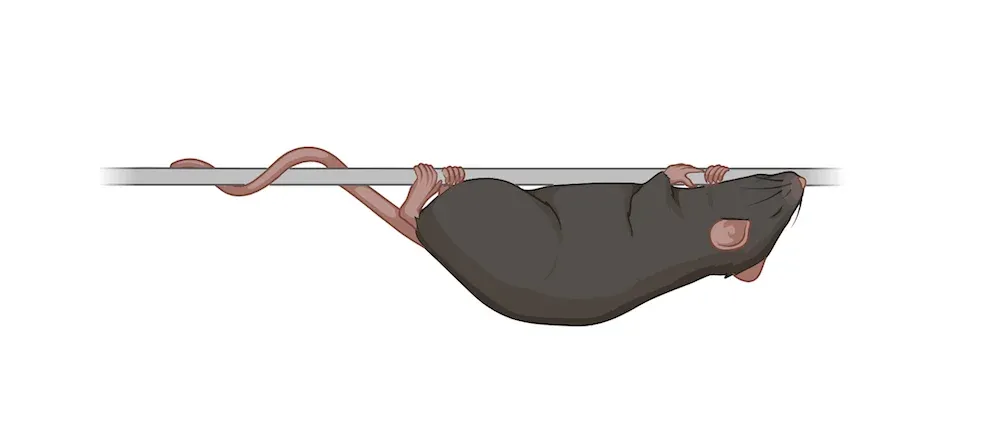
Wire Hang Test
The wire hang test is a method used to assess muscle function in rodent models. It assesses the ability of the animals to remain clinging to an inverted wire grid.
This test serves as a valuable tool in evaluating muscle strength and neuromuscular deficits resulting from different experimental conditions.
Learn more about our Services for Motor & Sensory Functions.